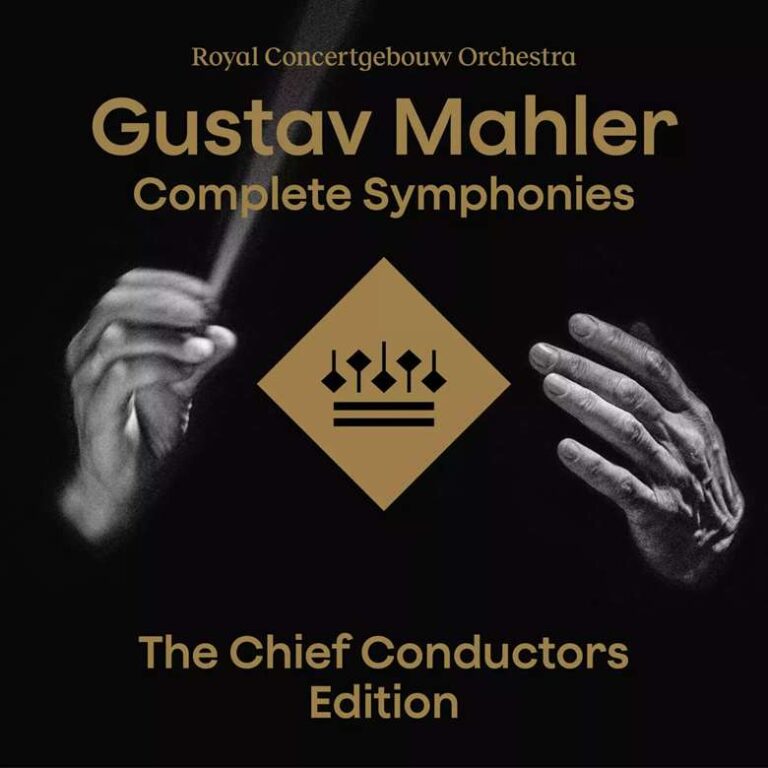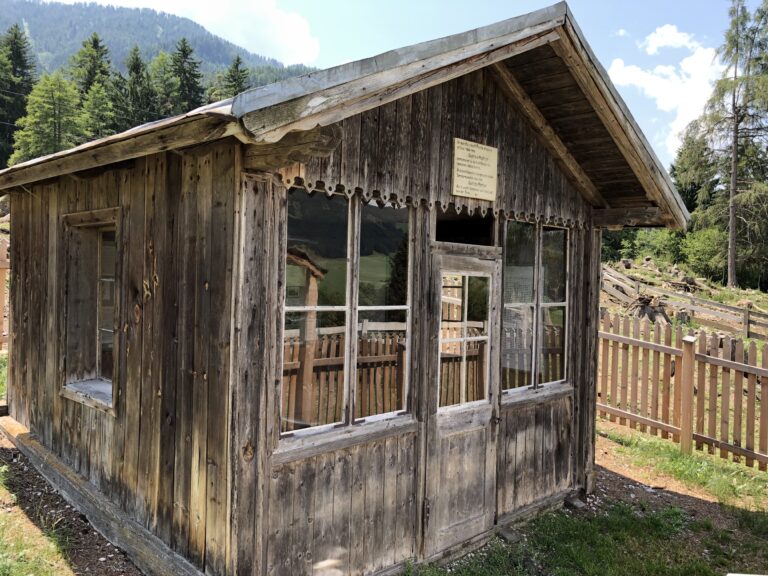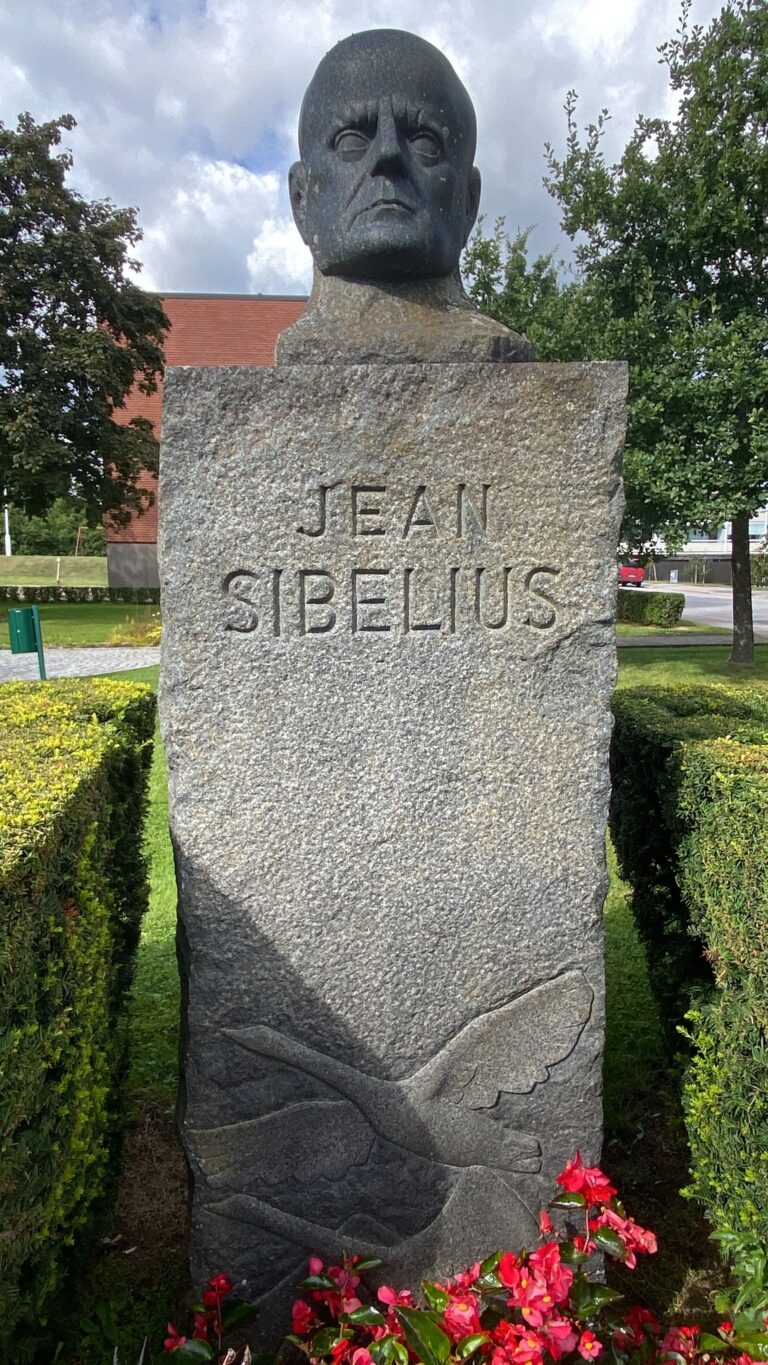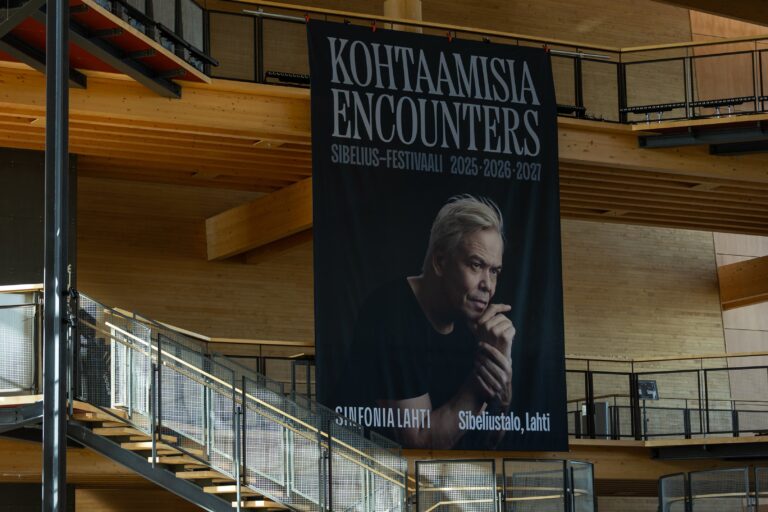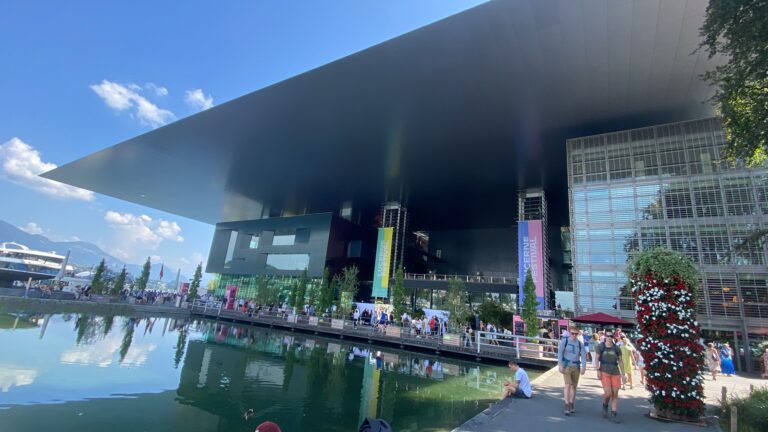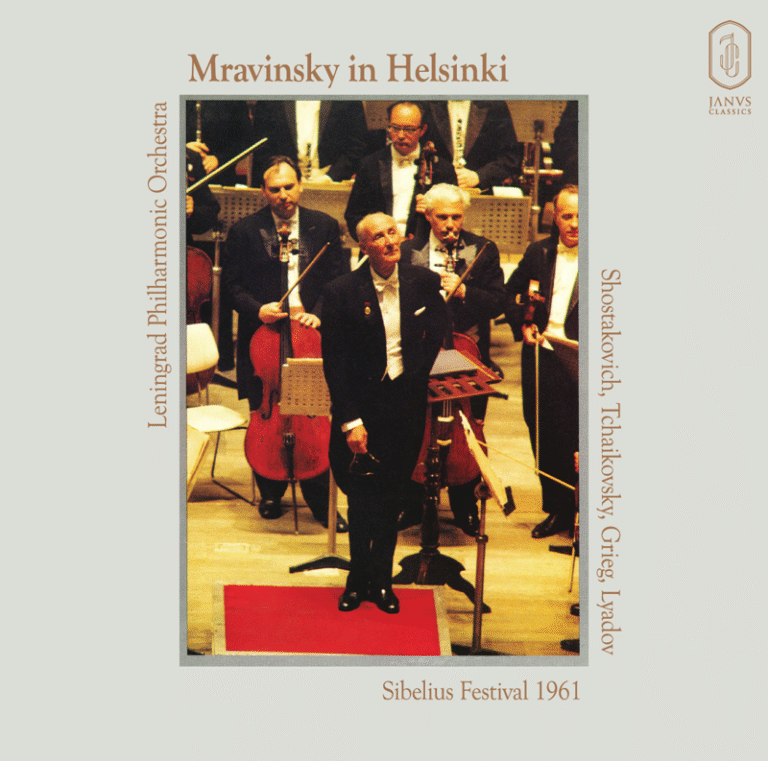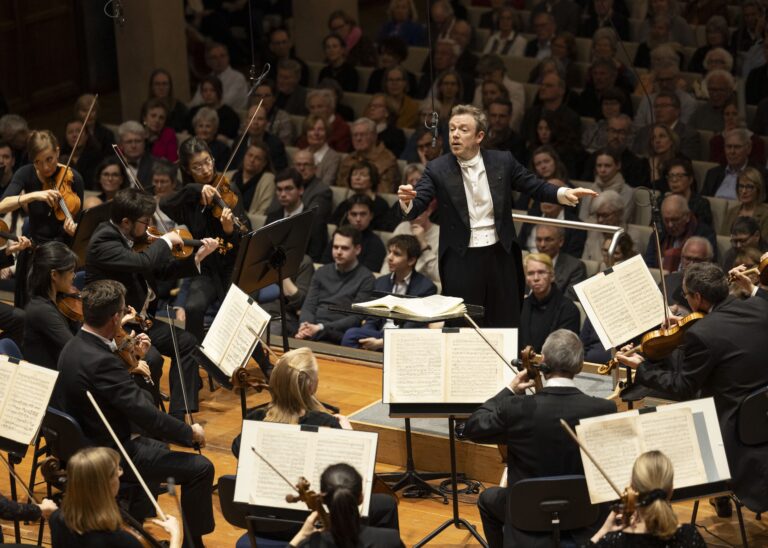Rare performance of "Luonnotar" with two great symphonies
A more classical interpretation of Sibelius’s Third and Fifth Symphonies, coupled with a rare performance of « Luonnotar », sung by soprano Golda Schultz. Dalia Stasevska led the Finnish Radio Symphony Orchestra through a concentrated exploration of Sibelius’s musical language, bringing out the depth and mysticism inherent in these works.
Photo credits: Pulsations
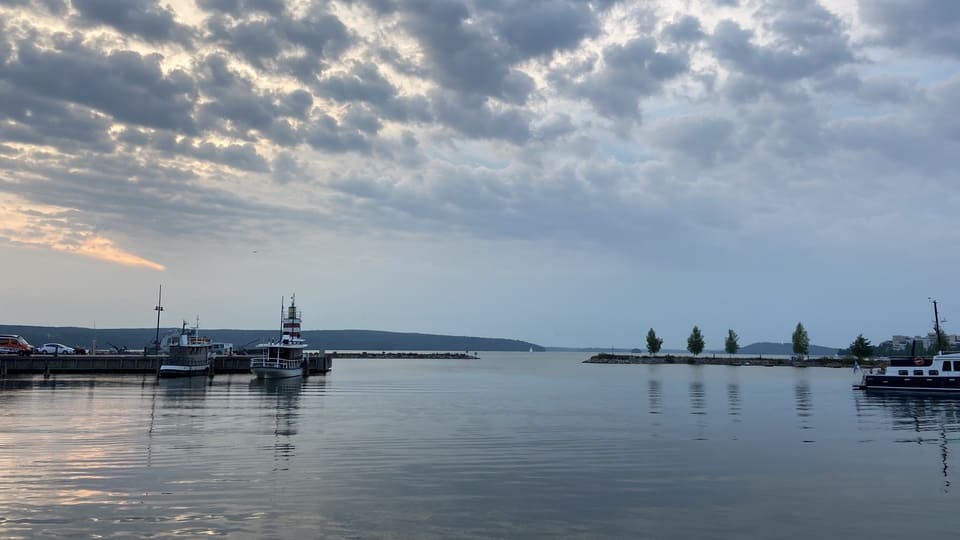
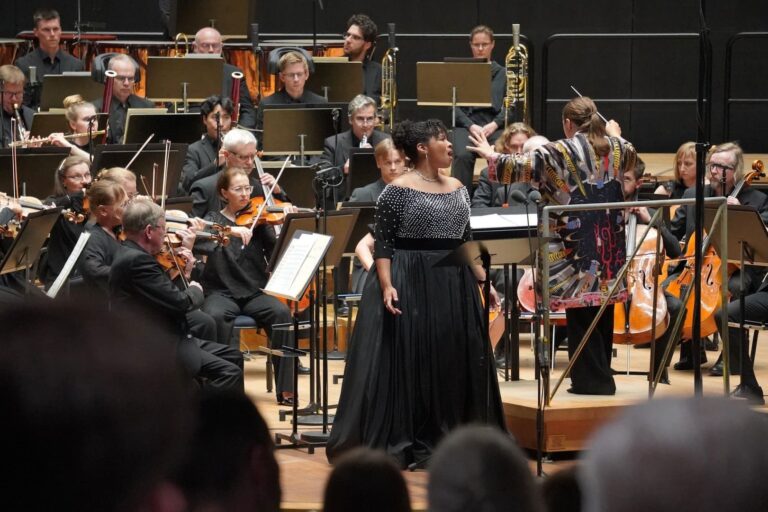
credits: Henrika Bäcklund / Sinfonia Lahti
Date and Venue: August, 30th, Sibelius Hall, Lahti (Finland)
Conductor: Dalia STASEVSKA
Soprano: Golda Schultz
Orchestra: Finnish Radio Symphony Orchestra
Program:
Jean SIBELIUS (1865-1957)
1) Symphony No. 3 in C major, Op. 52
2) Luonnotar, Op. 70, Tone poem for soprano and orchestra
3) Symphony No. 5 in E-flat major, Op. 82
On August 29, 2024, artistic director of the Lahti International Sibelius Festival Dalia Stasevska continues its ambitious project of presenting the complete cycle of Jean Sibelius’s symphonies—a celebration of the composer’s legacy and a deep exploration of his musical language. Following the compelling performances of the first two symphonies the previous night, the second evening of this three-day series features the distinguished Finnish Radio Symphony Orchestra under the direction of the ever-dynamic Dalia Stasevska.
The FRSO, celebrated for its rich history and commitment to both contemporary and classical music, is one of Finland’s premier orchestras. Founded in 1927, the orchestra plays a pivotal role in promoting Finnish music, often premiering works by leading Finnish composers. Their reputation for precision, depth, and a broad palette of tonal colors makes them an ideal choice for this evening, which is dedicated to Sibelius’s Third and Fifth Symphonies, as well as the rarely performed Luonnotar.
Sibelius’s Third Symphony: A Return to Classical Restraint
The concert opens with Sibelius’s Third Symphony, a work that marks a significant evolution in the composer’s artistic journey. This symphony represents a departure from the expansive, Romantic idiom of his first two symphonies, moving towards a more restrained, classical form. It reflects the shifting tides of Sibelius’s creative process, as he begins to embrace a more concise and distilled musical language. Composed during a pivotal period in Sibelius’s life, following his move to Järvenpää in 1904, the symphony is initially intended for a premiere in London but is first performed in Helsinki in 1907, underscoring its personal and national significance.
The first movement opens with robust, almost austere clarity. The rhythmic pulse serves as the heartbeat of this movement, and Dalia Stasevska’s interpretation stands out for her precise emphasis on these rhythmic intricacies. The flutes’ incisive opening statements establish a tone of measured restraint that resonates throughout the movement. The strings add a grounded energy, crafting a soundscape that is vibrant yet anchored in the earth. This connection to the earth element continues the thematic journey of natural elements initiated in the previous evening’s concert.
Stasevska’s handling of this symphony is particularly noteworthy for her ability to evoke grandeur reminiscent of Bruckner. The brass sections, for instance, are especially resonant, delivering a sound that conveys the monumental scale often associated with Bruckner’s symphonic works. Stasevska demonstrates a clear affinity for this grand orchestral style, managing the large ensemble with a sense of cohesion and purpose. Her handling of the tuttis, ensuring that the brass shine without overwhelming the texture, is a testament to her nuanced approach in balancing the symphony’s complex layers.
In the second movement, the mood shifts towards a more introspective and poetic atmosphere. Stasevska expertly balances the movement’s inherent lyricism with waltz-like rhythms that occasionally dip into a somber, almost funeral-march-like quality. This approach is reminiscent of Mahler’s First Symphony (Titan), adding a layer of emotional depth to the performance. The cellos, with their deeply resonant timbre, and the oboe, played with exceptional sensitivity by Kyeong Ham, bring forth some of the evening’s most poignant moments.
The final movement – Moderato – allegro (ma non troppo) flows seamlessly from the second, characterized by a vibrant flurry of strings. Stasevska embraces the dynamism and agility that this movement demands, driving the tempo forward with a lively, almost mercurial energy. While there is a palpable sense of urgency in her direction—perhaps a touch too much at times—it nonetheless sustains the movement’s buoyant and youthful spirit. The percussion adds a passionate intensity that propels the music towards its conclusion, injecting both excitement and momentum. This movement, with its forward drive and energy, emerges as the most successful part of the symphony, culminating in a finale that resonates with fierce determination and a palpable sense of closure.
Luonnotar: A Visionary Ode to Creation
Following the more classically restrained Third Symphony, the concert takes a dramatic turn with Luonnotar, one of Sibelius’s most enigmatic and challenging works. Composed in 1913, Luonnotar is a tone poem for soprano and orchestra based on the creation myth from the Kalevala, Finland’s national epic. The narrative follows Luonnotar, the “Daughter of the Heavens,” as she descends from the air into the sea, where she becomes the “Mother of the Water” and gives birth to the universe. This piece, although brief in duration, encapsulates the vastness of creation and the mystical essence of Finnish mythology.
Luonnotar is rarely performed in concert due to its complexity, both linguistically and musically. The Finnish language, while beautiful and rich, presents significant challenges for non-native speakers. As one of the most grammatically complex languages, it requires a deep understanding to be convincingly performed. Tonight, soprano Golda Schultz rises to this challenge with remarkable skill, delivering a performance that my Finnish friends describe as “highly credible.” Her command of the language, combined with her extraordinary vocal technique, brings the narrative to life in a way that is both powerful and authentic.
The vocal part in Luonnotar is notoriously difficult, demanding extreme agility, a wide vocal range, and the ability to navigate rapidly shifting dynamics and textures. Schultz’s performance is nothing short of impressive. She handles the stratospheric high notes with ease, her voice shimmering with the ethereal quality that the piece demands. Her phrasing is delicate yet assured, and she maintains a sense of breath control and flexibility throughout, embodying the mythical figure of Luonnotar with both grace and strength.
Dalia Stasevska’s conducting provides the perfect complement to Schultz’s voice, crafting a soundscape that is both haunting and evocative. From the very beginning, where Sibelius marks the score with the word “Visionario,” Stasevska builds an atmosphere steeped in mystery and anticipation. The orchestral accompaniment is dark and brooding, with the strings and woodwinds weaving together to form a spectral backdrop that feels almost primordial. As the piece progresses, Stasevska skillfully navigates the shifting dynamics, building the intensity to a frenzied climax that is both thrilling and terrifying.
Stasevska’s interpretation of Luonnotar is particularly notable for its balance between the otherworldly, visionary aspects of the piece and a deep sense of emotional resonance. The orchestra, under her direction, doesn’t merely accompany the soprano but becomes an integral part of the storytelling, embodying the forces of nature and the cosmos that Sibelius seeks to depict. The climactic moments are handled with a controlled frenzy, the music swelling and receding like waves crashing against the shore, capturing the sense of a world in the throes of creation.
In the end, Luonnotar stands out as one of the most compelling performances of the evening. The combination of Schultz’s virtuosic singing and Stasevska’s visionary conducting results in a performance that is both mesmerizing and profoundly moving. The music’s spectral quality, combined with its apocalyptic intensity, leaves a lasting impression on the audience, transporting them to a world that is both ancient and yet somehow still unfolding before their eyes. Luonnotar embodies the « air » element, and the next work confirms the great exploration of all the elements during this fascinating symphonic journey.
Sibelius’s Fifth Symphony: The Struggle and Triumph of Air
The final work of the evening is Sibelius’s Fifth Symphony, a masterpiece that stands as a monumental achievement in his symphonic output. Composed between 1914 and 1919, this symphony reflects the turbulent times during which it was created, including the upheavals of the First World War and the Finnish Civil War. Sibelius himself describes the process of composing this symphony as a “struggle with God,” capturing the profound spiritual and existential battles that accompanied its creation.
The Fifth Symphony is renowned for its expansive scope and deep, almost metaphysical undertones. Structured in three movements, the symphony culminates in one of the most iconic finales in the orchestral repertoire. The first movement, which opens with a majestic theme inspired by Sibelius’s vision of swans in flight, is a study in contrasts, combining broad, sweeping lines with moments of intricate detail and delicate orchestration. This movement is complex and multifaceted, beginning with a tempo molto moderato that evolves into an allegro moderato. It is essentially a fusion of sonata form with a scherzo-like energy that ebbs and flows throughout. The movement’s primary theme, inspired by the image of swans, unfolds grandly and lyrically, evoking a sense of vast, open skies. This theme is juxtaposed with more fragmented, almost pointillistic passages that reflect the uncertainty and struggle Sibelius experiences during its composition. Dalia Stasevska’s interpretation is marked by precision and clarity, with the flutes delivering an impeccable entrance that sets the stage for the movement’s unfolding drama. The beginning, often challenging to execute with its precise attacks, is handled with remarkable assurance, especially by the woodwinds. The strings are vibrant and alive, evoking the elemental force of air, a continuation of the exploration of elements that characterizes Stasevska’s interpretations throughout this cycle. The movement itself is full of life, trembling with the energy of birch leaves in the wind—a vivid depiction of nature in motion.
Stasevska’s approach to this symphony, particularly to the first movement, seems deeply informed by a sense of coherence within the cycle. After the earthiness of the first two symphonies and the watery depth of the Second Symphony, here the air element takes precedence, with the music lifting off the ground and soaring into the skies. The brass, once again, plays a crucial role, their sound rich and resonant, adding weight to the overall texture. Yet, as the movement progresses, there is a sense that the tempo begins to rush, leading to a final section that feels somewhat hurried. The percussive elements, particularly towards the end, become overpowering, causing the final moments to lose some of their intended majesty. The ethereal string theme, which should have floated delicately above the orchestration, is somewhat lost in the tumult, resulting in a conclusion that, while powerful, lacks the full grandeur that Sibelius’s vision demands.
The second movement (andante mosso, quasi allegretto) offers a stark contrast, with its introspective and poetic atmosphere. This movement is characterized by a theme that is both simple and profound—a gentle, almost folk-like melody passed between the strings and woodwinds. Stasevska once again demonstrates her ability to draw out the lyrical qualities of the music, creating a sense of tranquility and reflection. The movement’s structure is almost theme and variations in nature, with Sibelius developing the initial melody through subtle shifts in harmony and texture. However, the silences in this movement, while effective, do not quite reach the depth that might have been expected, especially when compared to the previous night’s performances. Nevertheless, the oboe, still played with exceptional sensitivity, stands out as a highlight, adding a lyrical depth that enriches the movement’s overall texture. Ham’s playing is a reminder of the subtlety and nuance that can be achieved within Sibelius’s orchestration, offering moments of genuine beauty amidst the broader sweep of the symphony.
The third movement (allegro molto), following seamlessly from the second, is characterized by a vibrant energy that Stasevska channels with skill and finesse. The movement opens with a lively, almost scherzo-like figure in the strings, leading to a series of rhythmic and thematic developments that build towards the symphony’s climactic finale. The tempo is brisk, perhaps even pushing the boundaries of what the score suggests, but it is imbued with a sense of urgency and forward momentum that captures the spirit of the music. Here, the emphasis is on dynamism and brightness, the music bounding forward with youthful exuberance. The percussion section, particularly the timpani, adds a passionate intensity that propels the movement to its exhilarating conclusion. The final chords, marked by their famous “swan theme,” resonate with a sense of triumph, bringing the evening to a fitting and powerful close. These final moments, with their iconic structure, evoke the grandeur of Wagner’s Lohengrin, particularly in the high violins, which seem to echo the ethereal quality of Wagner’s prelude, imbuing the finale with a divine and otherworldly character.
To put it in a nutshell, tonight’s concert offers a compelling journey through the elements that have come to define Sibelius’s music under the baton of Dalia Stasevska. From the earthbound, rhythmic drive of the Third Symphony to the visionary, otherworldly landscapes of Luonnotar, and culminating in the expansive, air-filled struggle and triumph of the Fifth Symphony, this is a performance that explores the full breadth of Sibelius’s elemental world. Stasevska’s interpretations are marked by precision, energy, and a deep understanding of the composer’s unique voice. While there are moments where the balance could be more finely tuned, the overall impact of the evening is one of profound resonance and insight into Sibelius’s musical universe.

credit: Henrika Bäcklund / Sinfonia Lahti


